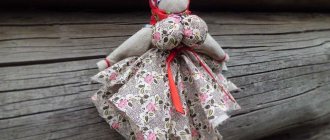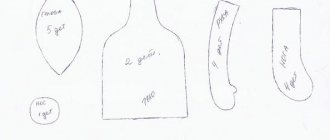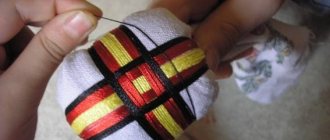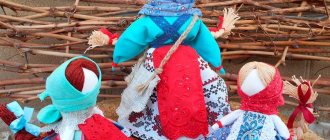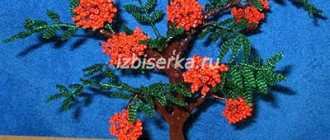The image of an angel accompanies a person throughout his life. From birth, everyone receives their own good spirit, a guardian angel who will help throughout their lives. In addition to the fact that the angel protects the soul from degeneration, the bright spirit is also a helper, you just have to turn to him. If the request is not aimed at causing harm to anyone, the assistant angel will definitely help you fulfill it.
Christmas Doll Guardian
Do not be disdainful of protective dolls. Even if you do not believe in the protective power of such a thing, this does not mean that the doll is completely useless. This is a folk art form that has safely survived to this day, although it has undergone some changes.
Such an angel cannot be made as a simple souvenir, especially not for close people, but for distant friends and people who, by and large, are not close to you. The whole point is that by creating a small amulet doll, you charge it with your energy, invest a sincere desire to protect it and protect it from evil. Therefore, such amulets are usually exchanged with children, parents, loved ones and close people.
The common distinguishing feature of all protective dolls is that they do not have facial features. It is believed that through the painted eyes, someone evil can enter the doll. It is also not customary to decorate figurines - excessive pretentiousness and brightness attract attention, which is absolutely not required. Several master classes on how to make different protective angels.
Angel made of threads
This amulet craft can be hung on a Christmas tree during the winter holidays. To work you will need:
- Thick natural yarn in white, brown or beige.
- A piece of cotton wool.
Sequencing. Divide the bundle of yarn into three unequal parts. Most of it will be needed for the body of the angel; arms and wings are made from the smaller ones.
First step. Fold the larger bundle in half and place a cotton ball in the fold. This is the head. Carefully distribute the threads so that the cotton wool is not visible; tie the bundle under the ball with a separate thread.
Second step. Under the neck thread, divide the yarn into front and back. Fold the front part over your head and place a smaller bundle of thread perpendicularly in the middle. Return the folded yarn back to its place.
Third step. Make several constrictions with threads, forming the arms and waist of the angel. Separately knit the third bundle of threads - first pull along the edges, then in the center. Pull the threads so that you get two rounded triangles with a constriction.
Fourth step. Tie the wings to the back of the figurine, tying the chest crosswise in front. Weave a braid-hoop from three separate threads and tie it on the doll’s head. The amulet is ready!
Handkerchief amulet
The simplest options, which even a child can master, do not require the ability to sew or any other skills. You will need a square of white fabric, a ball of cotton wool, red and white threads.
The meaning of the angel amulet
In ancient Russian culture, the rag doll (motanka) was given special sacred meaning. In childhood, the doll was a favorite toy, passed down from generation to generation and served as a magical talisman for an entire family. She protected the owner throughout his life, drove away evil spirits, and was a protector and helper in difficult times.
The knotted doll was considered a powerful talisman and performed the following functions:
- brought goodness, prosperity and health;
- protected from the views of unkind people;
- was a symbol of peace and tranquility;
- scared away evil forces;
- maintained health and sound sleep;
- contributed to the development of the child;
- was a participant in holidays and rituals.
With the advent of Orthodoxy, the rag doll acquired the image of a divine protector - an angel. Such a talisman was individual and merged into one with the aura and energy of the owner, and therefore was intended strictly for a specific person. According to legend, angels descended to earth to protect and instruct people.
It was believed that after birth the baby had its own divine guardian angel. He watched as the soul grew, warded away evil spirits and thoughts of bad deeds from it, stood up for the ward in earthly life, and protected the body from illnesses. Each baby had his own personal Angel. The doll was hung over a child's crib to ward off the evil eye, damage and evil spirits. The angel was the child’s first amulet doll and remained his protector until he grew up.
Only female representatives were allowed to make a rag Angel, most often a grandmother or mother of a child. It was believed that only an experienced woman could fill an Angel doll with power.
While working, she poured her whole soul into the doll, and her angel instructed the baby's guardian. Men were not allowed to do needlework, they were not even allowed to observe the process.
In order for the Angel doll to carry only a good beginning and be safe for the child, it was made faceless. The Slavs believed that the Angel doll, which has eyes, a nose, and a mouth, could become a container for the soul and bring harm to the owner. It could be used by black sorcerers to cause damage.
In the process of creating the Angel doll, it was forbidden to use scissors and needles. A talisman that was pierced with a sharp object was considered spoiled and useless. The fabric was torn by hand and the threads were bitten off. An even number of knots were knitted on the doll, and a wish and blessing were spoken for each one.
We have probably collected all types of Slavic motanka dolls for all occasions.
Miracle from nylon
Handmade nylon dolls look amazing - cute, touching and very original figures that will leave few people indifferent. The most difficult thing in the whole process is to correctly form the face of the toy. A small master class will help you master this tricky science . To work you will need:
- Nylon tights, preferably flesh-colored.
- Sintepon (not sheet).
- Glue gun and sticks.
- Needles, threads, tailor's pins.
- Artificial hair or small feathers.
- Feathers for wings, flexible wire, white ribbon.
- Lace.
- Cosmetics and brushes - blush, brown eye shadow.
- Eyes.
- White rope or cord of the same thickness.
- Felt heart.
LiveInternetLiveInternet
Angel statues can be seen in almost every home. Often they perform not just a decorative role, but are filled with deep symbolic meaning.
We usually give angels to close people who are not indifferent to us.
A gift in the form of such a figurine can become a very strong and reliable amulet, since the original and most important meaning of this figurine is a guardian angel. The angel has always been considered a symbol of the power of the Higher, invisible world, insight and enlightenment.
These humanoid winged creatures are identified with the divine will. Their purpose is to serve God, fight his enemies, and mediate between God and man.
If you were given a figurine of an angel, and you are thinking about where to put it, know that the best place for this amulet is in the northwest, it will give the owner of the house inspiration and strength.
Angel figurines serve as a powerful talisman for those born under the sign of Aquarius.
They endow their owner with special intuition and insightful mind. Aquarians should, without waiting for a gift, buy a glass or porcelain figurine of an angel themselves and turn to him every day with requests for help and support in all endeavors.
Today there are quite a lot of variations of angel figurines.
One of the most beautiful figures is considered to be the “Wedding Angel”.
It has long been believed that during a wedding, God sends the bride and groom one common guardian angel, who protects them all their lives from troubles, adversity and failure.
Having given the newlyweds such a figurine, there is no doubt that under its auspices they will have fewer reasons to quarrel over trifles and be jealous without reason.
The “Dancing Angel” figurine, depicting a boy standing on the tip of one leg, symbolizes the expression of gratitude and appreciation to God for material well-being, for protection from poverty, this angel will bring abundance, wealth and prosperity to your home, as well as God’s blessing and peace in the family.
The most unusual figurine is. "Angel with a Pearl"
Orange sea shells and a seascape decorate the angel's skirt, creating a special atmosphere of sunshine, breeze and a fabulous holiday by the sea. “Angel with a pearl” is a unique amulet against bad mood and prolonged depression, which at the same time is a kind of “highlight” of the interior of the house.
Recently, small figurines of angels can often be seen in gardens and personal plots.
They symbolize peace of mind and spiritual search, which is why gardeners and summer residents love to install them on their plots.
An angel figurine should be in every home, it is beautiful and absolutely necessary.
Understanding that you are protected and protected by Higher powers, which are symbolically represented by a figurine of an angel, gives a person strength and confidence in the most difficult situations.
Well, don’t forget to share this positive energy with your loved ones - give them angel figurines!
So that the child sleeps soundly at night, and no one can jinx him during the day, let a figurine of an angel constantly stand near his bed.
Once a week you need to pick it up, wipe the dust with a cloth and say the following spell 3 times:
“An angel flies through the forest, sits down on a bush, looks at the child, smiles, cannot be overjoyed. Neither a wolf will attack a child, nor a dashing thief will steal, nor a sorcerer will cause damage. An angel watches over the child and protects him from harm. Let it be so. Amen!"
https://www.facebook.com/primeta24
Simple things made of fabric
To make a beautiful angel doll with your own hands , the patterns you will need are not too complicated. You can draw them yourself. To work you will need:
- Material 3 different colors. For the body - beige, for the cap and robe - blue, for the wings - light color.
- Lace ribbon for finishing.
- Cardboard and pencil.
- Sewing supplies and machine.
- Filler.
- Fabric paints and brushes.
- Yarn or artificial hair.
First step. Pattern. The easiest option to implement, especially for those who don’t really like or know how to sew, is a single pattern for the entire body. Exaggerated head, arms and legs. You should avoid too small details and sharp transitions. The wings and triangle-cap are drawn separately. It should match the size of the doll's head and be of such length that its tip rests on the angel's shoulder. The wings are a single unit with outlined rounded feather edges.
Second step. Transfer the pattern to the folded fabric. Pin together, cut out, leaving a seam allowance of 1 cm. Sew along the drawn line, leaving a 10 cm line open so that the material can be turned outward.
What to make an angel from
Crocheted angel amulet doll.
The personification of awakening nature, a talisman for long-term love. Anyone can make an angel. There are many techniques that allow even a child to make it. An angel can be sewn from fabric, knitted, embroidered, molded from dough or clay, made from straw or bast.
I present to your attention a guardian angel made using the technique of a folk toy made of fabric. A feature of the folk twisted doll is the ease of execution and the absence of costs for purchasing material.
Shade and painting
The body of the tilde is usually sewn from plain fabrics in beige, brown, white or gray. If you prefer some other shade, then, of course, you can use that too.
It is not always possible to find material of a suitable color in stores, but the fabric can be dyed using natural dyes. To dye a fabric a light beige color, for example, you need to brew coffee (the intensity of the color of the fabric will depend on the strength of the drink), immerse the material in a container with it for 10-60 minutes (the longer, the brighter the color will be), rinse well under running water cold water until the flowing liquid is clear, and then lay out to dry. The main thing here is thorough rinsing. If the material is not rinsed enough, it will color unevenly.
It is better to dry the fabric in a horizontal position. If there are creases in the material, then after drying you will find that the color on them has become brighter. If you hang the material on a line to dry, you can get an ombre effect, when the color loses intensity from top to bottom.
You can also color the material with black tea, onion peel infusion, sorrel or other natural dyes.
To make a tilde angel, light beige or even white fabric is suitable, although some craftswomen deliberately make the body of such a doll darker so that the white clothes and wings create contrast.
Angel with beads
White angel fabric is made of two types: felt and cotton. You also need a thick thread and beads. Find a pattern and cut out all the necessary parts.
Bead decoration
Sew them together and stuff them with padding polyester. Sew beautiful wings on the back. They can be decorated with zigzag stitching. Use the same method to make the arms and legs of the toy. Now you need to decorate the craft with beads; to do this, string the first decoration on a thread and sew it to the toy. 5 beads will be enough; the bottom of the toy can be edged with lace.
Angel wings for a doll, how to make
Wings for dolls can be made from wire-based organza, feathers, and even pieces of fabric.
feather wings
The wing template is printed and cut out.
A wire is passed along the top and bottom edges. Then the template is applied to the non-woven fabric and 4 identical blanks are cut out.
Wire is passed through the upper and lower ends of the non-woven blanks. It should go inside the wings.
Both sides of the wings are covered with feathers. They are attached with glue.
For realism, the wings are slightly bent.
Wings made from pieces of calico
The wing template is transferred to the fabric, cut out and stitched along the seam. Leave a small hole for filling with padding polyester.
The calico is torn into strips 2 cm wide, folded in half and stitched with two seams, departing 0.5 mm from the fold. The flats are cut into pieces (8-9 cm) and a corner is cut off from each.
Fabric feathers are sewn along the edge on both sides. It is desirable that the tips be of different sizes.
Then they start working on short feathers. The chintz is torn into strips and cut into 2 cm pieces.
A basting stitch is passed through the fabric, the thread is pulled up a little and sewn to the wing. They work until the entire space is filled.
For naturalness, the wings are combed with a brush. The color of the wings can be adjusted with acrylic paints in a 1:1 ratio with PVA glue.
